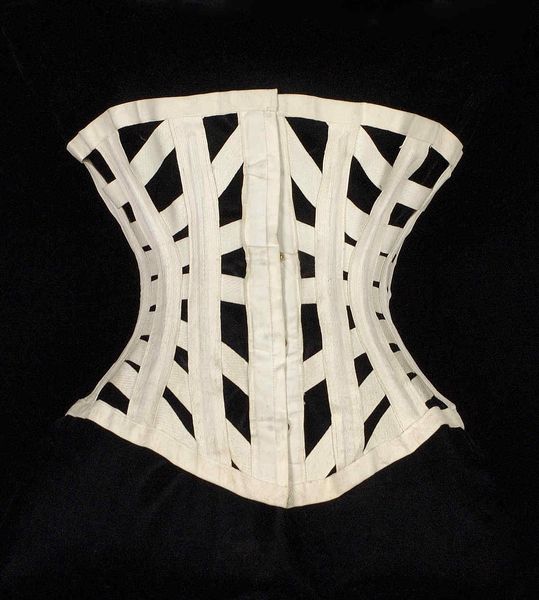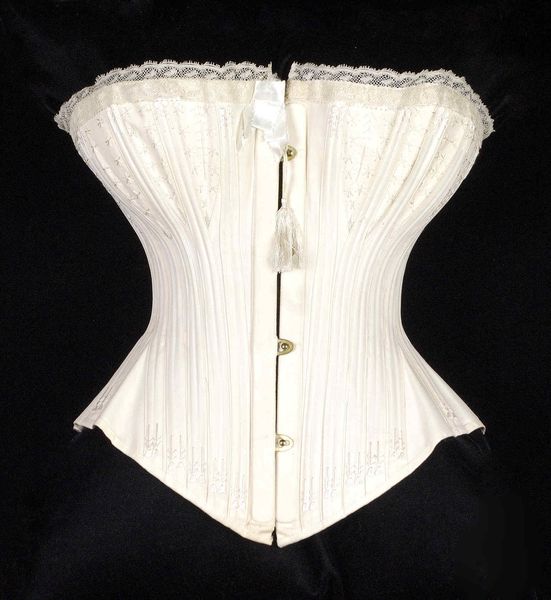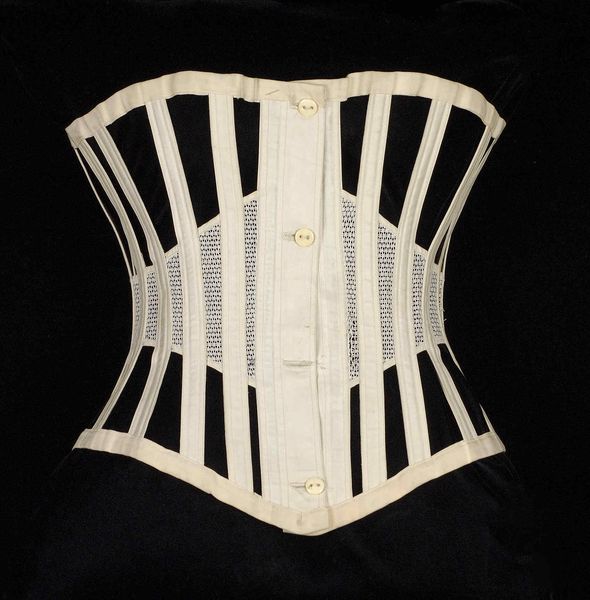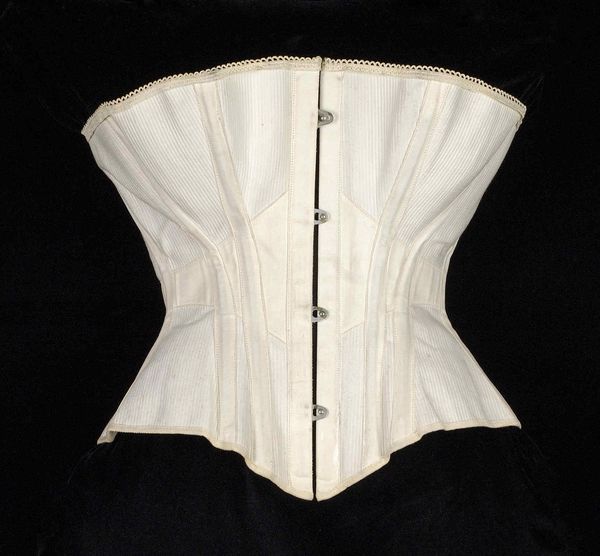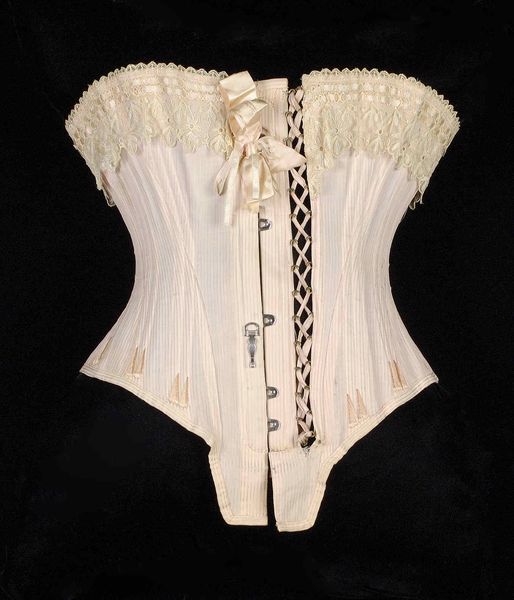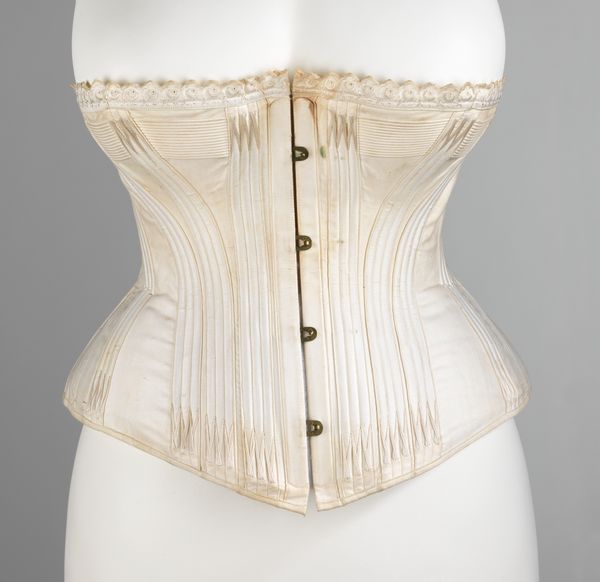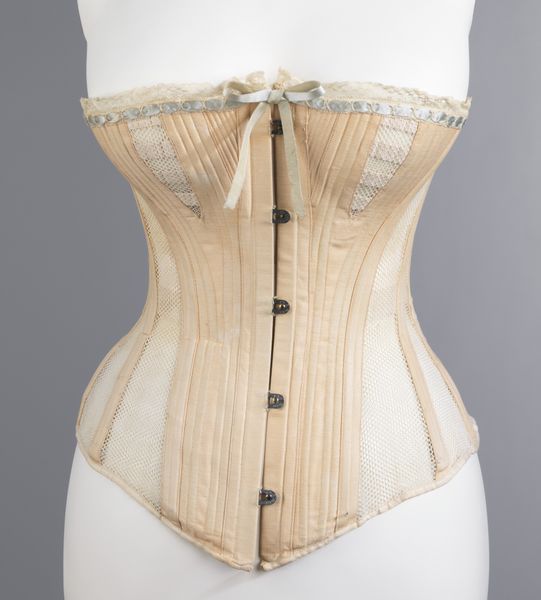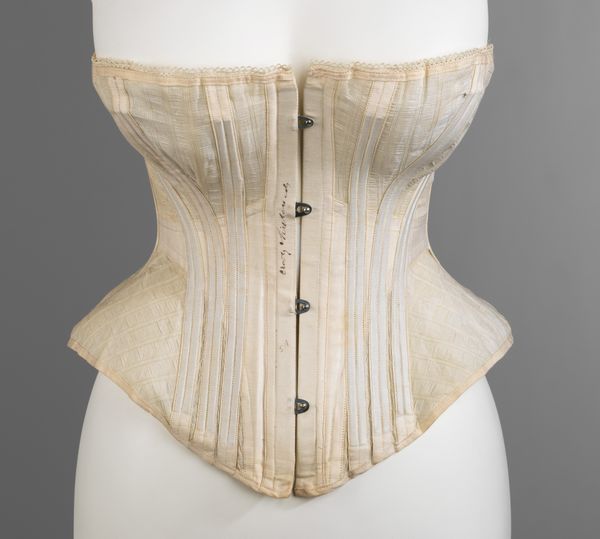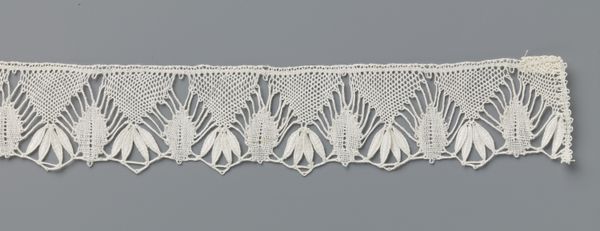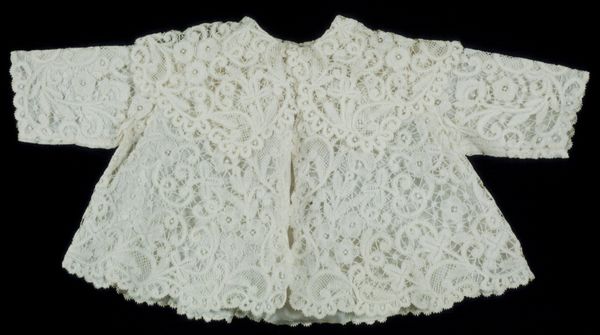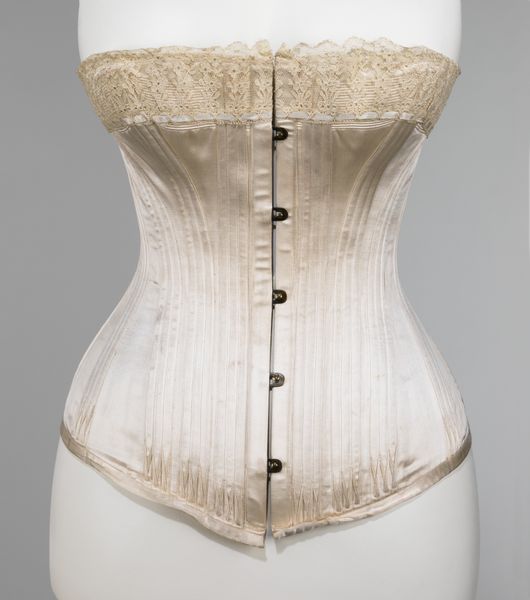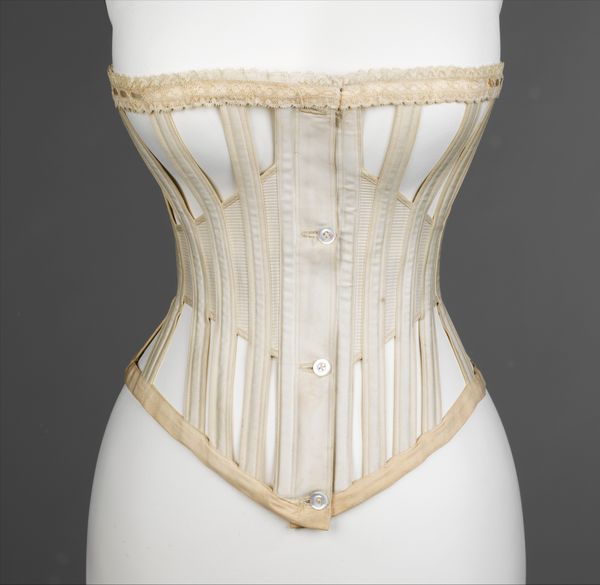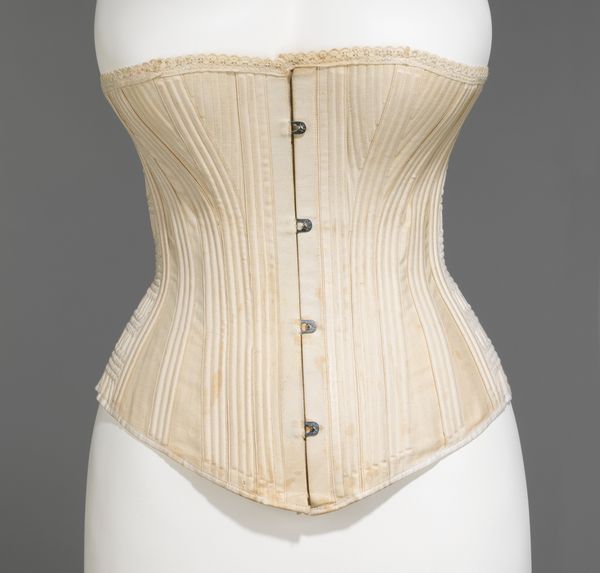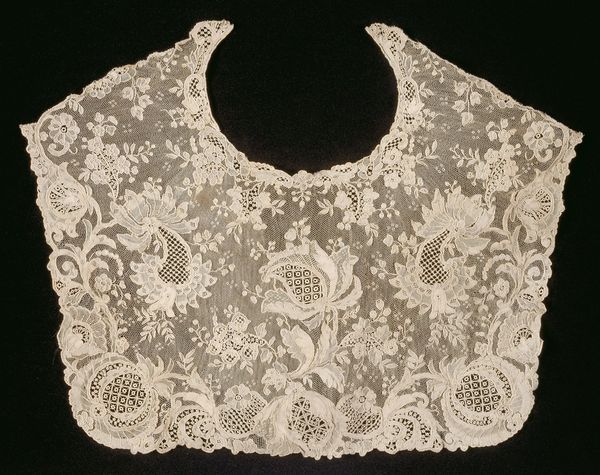
mixed-media, assemblage, textile, sculpture
#
mixed-media
#
assemblage
#
sculpture
#
textile
#
historical fashion
#
sculpture
#
costume
Copyright: Public Domain
Curator: Standing before us is an intriguing object titled "Corset," dating back to the years 1874 to 1878. It's part of the collection here at the Metropolitan Museum of Art, and credited to Madame J. H. Rutherford. Editor: Immediately, I see a beautiful sculpture crafted with a mixed media or textile aesthetic. The historical fashion is apparent, it gives off a rigid, yet elegant vibe. The lines seem harsh and restrictive. Almost like architecture designed for the human form. Curator: Indeed. This particular garment offers us insight into the fashionable silhouette desired in that period. The corset, typically crafted using textiles and whalebone or steel, served to mold the body into an hourglass shape, accentuating the bust and hips while minimizing the waist. Editor: "Sculpting the body," huh? Almost makes me want to weep for the poor women of the era. Can you imagine being laced into one of those things day after day? Still, I can't deny the craft that has gone into producing a thing like that. Is it also fair to acknowledge a strange beauty and geometry at play, the lattice-like structure offering both restraint and... a sort of vulnerable openness? Curator: It’s important to remember that these garments weren't just instruments of oppression but also status symbols. A tightly laced figure displayed wealth and leisure because it restricted movement and would have been impossible for someone doing physical labor to manage. However, scholars debate how widespread the practice of tight-lacing actually was, with many suggesting its prevalence was exaggerated in popular media. Editor: Fascinating how an object can carry so much socio-political weight. I’m suddenly reminded of the expression "wearing your privilege," albeit quite literally! As an artist, the assemblage is really compelling, but even then I don’t want to glamourize the concept of beauty-through-constraint. Curator: Exactly. Studying historical fashion is never just about aesthetic taste. It's a portal into understanding societal power structures, ideals of beauty, and the roles individuals played within those frameworks. This object holds the whispers of conversations, struggles, and adaptations surrounding ideals of womanhood. Editor: Looking at it now, I see a ghostly outline, not so much a celebration of the form, but a reminder of the form’s subjugation, it definitely brings a unique outlook to modern fashion and the influence the corset continues to possess even in a society such as today's, which supposedly celebrates free thinking. Curator: A potent reminder indeed, which really underscores its continuing power.
Comments
No comments
Be the first to comment and join the conversation on the ultimate creative platform.
